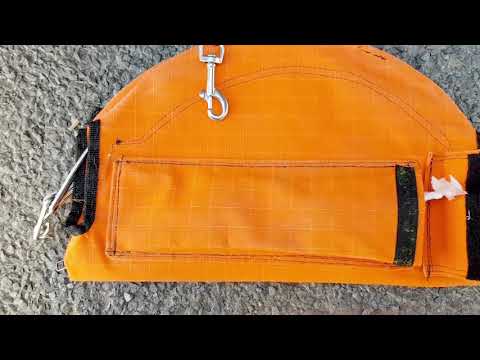Lobster fabric is a captivating textile that seamlessly blends elegance and whimsy. This unique fabric showcases the intricate beauty of the majestic lobster, bringing a touch of marine charm to any setting. With its vibrant colors and intricate details, lobster fabric effortlessly adds a playful yet sophisticated element to your interior design projects. Whether used for upholstery, drapery, or decorative accents, this fabric immediately elevates any space, making it a conversation starter and a focal point. The lobster fabric is meticulously crafted, ensuring the highest quality and durability. Its soft texture invites you to run your fingers over the fabric, indulging your senses with its smoothness. The rich and vivid hues of the lobsters are expertly captured, creating a visually stunning fabric that exudes luxury and style. Incorporating lobster fabric into your home decor allows you to infuse your space with a touch of marine-inspired design, evoking a sense of coastal charm and adventure. Whether you choose to create bold statement pieces or subtle accents, lobster fabric is the perfect choice for those seeking a unique and captivating addition to their interior design repertoire.

The History of Lobster Fabric
Lobster fabric is a unique and distinctive textile that has gained popularity in recent years. With its vibrant colors and intricate patterns, it has become a favorite among fashion designers and interior decorators. But what exactly is lobster fabric, and how did it come to be?
Lobster fabric has its roots in the rich history of textile production. It is believed to have originated in ancient China, where silk was first woven into intricate patterns. Over time, silk production spread to other parts of Asia and eventually to Europe. In the 18th century, lobster fabric started to gain prominence in France, where it was used to create luxurious garments for the aristocracy.
The Making of Lobster Fabric
The process of creating lobster fabric is incredibly intricate and time-consuming. It begins with the careful selection of high-quality silk or cotton threads. These threads are then dyed in vibrant colors using natural dyes or synthetic pigments.
Once the threads are dyed, skilled artisans start the weaving process. They use looms to create intricate patterns, often incorporating images of lobsters, shells, and other marine motifs. The patterns are meticulously woven by hand, resulting in a fabric that is both visually stunning and incredibly durable.
The Versatility of Lobster Fabric
Lobster fabric is incredibly versatile and can be used in a wide range of applications. In the world of fashion, it is often used to create statement garments and accessories. Designers love its bold colors and unique patterns, which add a touch of whimsy and playfulness to any outfit.
Beyond fashion, lobster fabric has also found its way into interior design. It can be used to create stunning upholstery for chairs, sofas, and pillows. Its vibrant colors and intricate patterns can transform any space into a vibrant and lively environment.
The Sustainability of Lobster Fabric
One of the key aspects of lobster fabric is its sustainability. Unlike other textiles that rely on synthetic fibers and harmful chemical dyes, lobster fabric is often made using natural materials and dyes.
Moreover, lobster fabric is often produced by skilled artisans who employ traditional weaving techniques. This not only helps preserve ancient traditions but also supports local communities and promotes ethical production practices.
Caring for Lobster Fabric
To ensure the longevity of lobster fabric, proper care is essential. It is recommended to hand wash lobster fabric garments and avoid using harsh detergents or bleach. Air drying is preferred over machine drying, as excessive heat can damage the fabric.
If lobster fabric is used in upholstery, regular vacuuming and spot cleaning can help maintain its appearance. It is also advisable to keep lobster fabric away from direct sunlight, as prolonged exposure can cause fading.
In Conclusion
Lobster fabric is a truly unique and remarkable textile that has captivated the hearts of many. Its rich history, intricate patterns, and vibrant colors make it a favorite among fashion designers and interior decorators alike. With its sustainable production methods and versatility, lobster fabric is sure to continue to make waves in the world of textiles for years to come.
List of Lobster Fabric
Lobster Fabric Information
| Property | Description |
|---|---|
| Material | Lobster fabric is typically made from a blend of natural fibers such as cotton or linen, with synthetic fibers like polyester or rayon. This combination ensures a balance between durability and comfort. |
| Design | Lobster fabric often features intricate patterns or motifs inspired by the majestic beauty of lobsters and the ocean. These designs can range from realistic lobster prints to more abstract interpretations, showcasing the vibrant colors and unique textures associated with these magnificent crustaceans. |
| Texture | The texture of lobster fabric can vary depending on the specific blend of fibers used. It can be smooth and soft, providing a luxurious feel, or have a slightly textured surface reminiscent of lobster shells, adding visual interest to any garment or home decor item. |
| Uses | Lobster fabric is versatile and can be used for various purposes. It is commonly employed in fashion design for creating stunning dresses, skirts, and blouses that make a bold fashion statement. Additionally, this fabric is also popular for upholstery projects, lending a touch of nautical elegance to furniture and home accessories. |
| Care Instructions | When it comes to maintaining lobster fabric, it is important to follow the care instructions provided by the manufacturer. Generally, it is recommended to hand wash or use a delicate cycle in cold water. Avoid using harsh detergents or bleach, as they can damage the fabric’s fibers. Air drying or using a low heat setting on a dryer is best to preserve its quality. |
